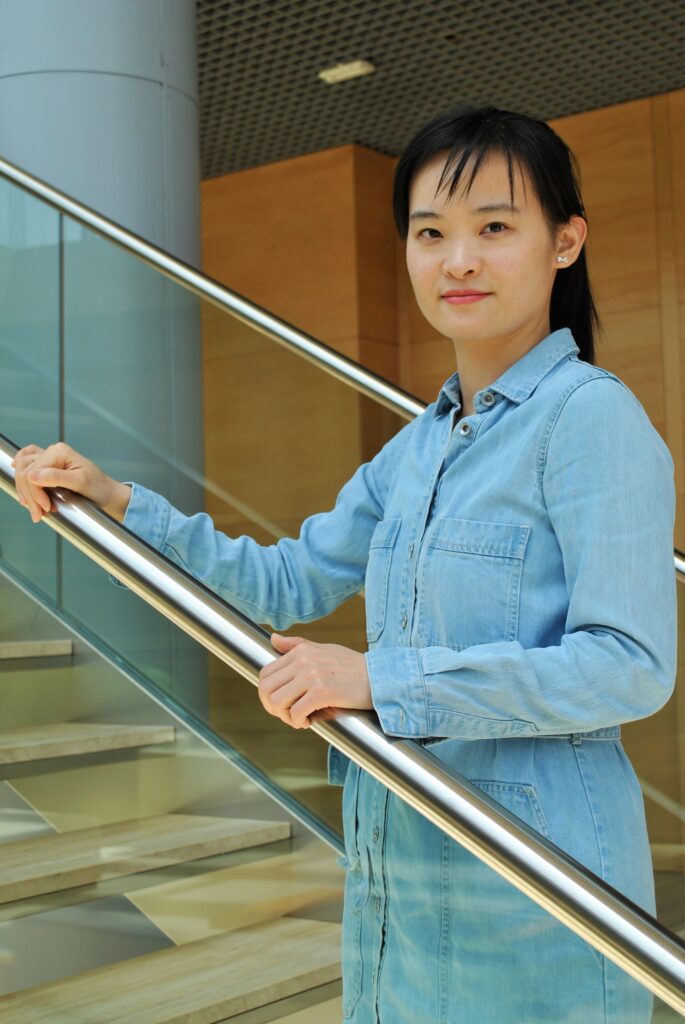As a Marie Sklodowska-Curie Actions (MSCA) postdoctoral fellow, Dr. Sha Liu has helped the IMDEA Materials Institute to become a reference in the calculation of phase diagrams of metallic alloys for engineering applications.
Dr. Liu, 31, joined IMDEA Materials in 2018 and has been working on this topic under the guidance of the Institute’s Scientific Director, Prof. Javier LLorca.

IMDEA Materials researcher and MSCA postdoctoral fellow Dr. Sha Liu.
Central to her work have been significant developments in the production of phase diagrams for binary and ternary alloys, an area in which IMDEA Materials is conducting pioneering research. Phase diagrams are essential elements in developing new materials and demonstrate the stable phases of substances at different pressures and temperatures.
When creating new alloys, such diagrams have traditionally been achieved through experimentation, a process which is both costly and time-consuming. However, new methodologies developed at IMDEA Materials allow for the realisation of such diagrams through computer simulation modelling.
“Phase diagrams are basically a guidebook to design new alloys,” Dr. Liu explained. “In the methods that we are developing, we don’t need to use experiments to create them, so that saves a lot of time and money, which are both very important.”
“I was the first person to do this kind of simulation in the group. It’s very challenging, but I finally proved that I could do it, and we have got very good results so far. “
“Currently, our results are in agreement with the experimental data so hopefully, in the future, we will be able to use this to design new materials without any experiments at all.”

(For published results of Dr. Liu’s work, see here:
Prediction of the Al-rich part of the Al-Cu phase diagram using cluster expansion and statistical mechanics – ScienceDirect and here:
2107.13645.pdf (arxiv.org).
And the significance of IMDEA Materials’ work in this field was further underlined by Prof. LLorca, whose research group specialises in the development of new materials for engineering applications in transport, energy and health .
“Starting from quantum mechanical calculations, we are able to predict, without any adjustable parameters, the formation energy and phase diagrams of binary and ternary structures,” Prof. LLorca said.
“In the case of binary alloys, the type of analysis we are doing has the highest accuracy in the world. And regarding ternary alloys, we are really one of the few centres anywhere that have demonstrated the ability to conduct this kind of modelling.”
Read about Dr. Sha Liu’s fellow IMDEA Materials Institute MSCA postdoctoral fellows at the following links:
Dr. Miguel Vázquez: https://materials.imdea.org/from-science-in-the-clouds-to-cnts-an-msca-fellows-journey-to-imdea-materials/
Dr. Ahad Mohammadzadeh: https://materials.imdea.org/msca-fellow-and-imdea-materials-scientist-dr-ahad-mohammadzadeh-on-the-next-generation-of-superalloys/
Dr. Lin Xuebao: https://materials.imdea.org/imdea-materials-and-a-new-generation-of-recyclable-sandwich-structured-composites/
Dr. Liu received her PhD from Yanshan University in China where she studied atomic-scale simulation. She was attracted to IMDEA Materials as the host of her MSCA fellowship due to its excellent international reputation in materials science.
And while her time as an MSCA fellow at IMDEA Materials will come to an end in June, she said she was excited, not sad, to be on the verge of starting the next chapter in her scientific career.
“I’m proud actually because I already have a professorial position arranged at Yanshan University, which is where I got my PhD,” she said. “And I will be able to continue to collaborate with Prof. LLorca there, not just focusing on this method, but also going further with new developments.”
IMDEA Materials is looking for postdoctoral researchers willing to apply for a MSCA Postdoctoral Fellowship in call 2022 and has several hosting offers open. To find out more about them, see here: https://materials.imdea.org/hosting-offers-for-the-marie-sklodowska-curie-actions-postdoctoral-fellowships-2022/
